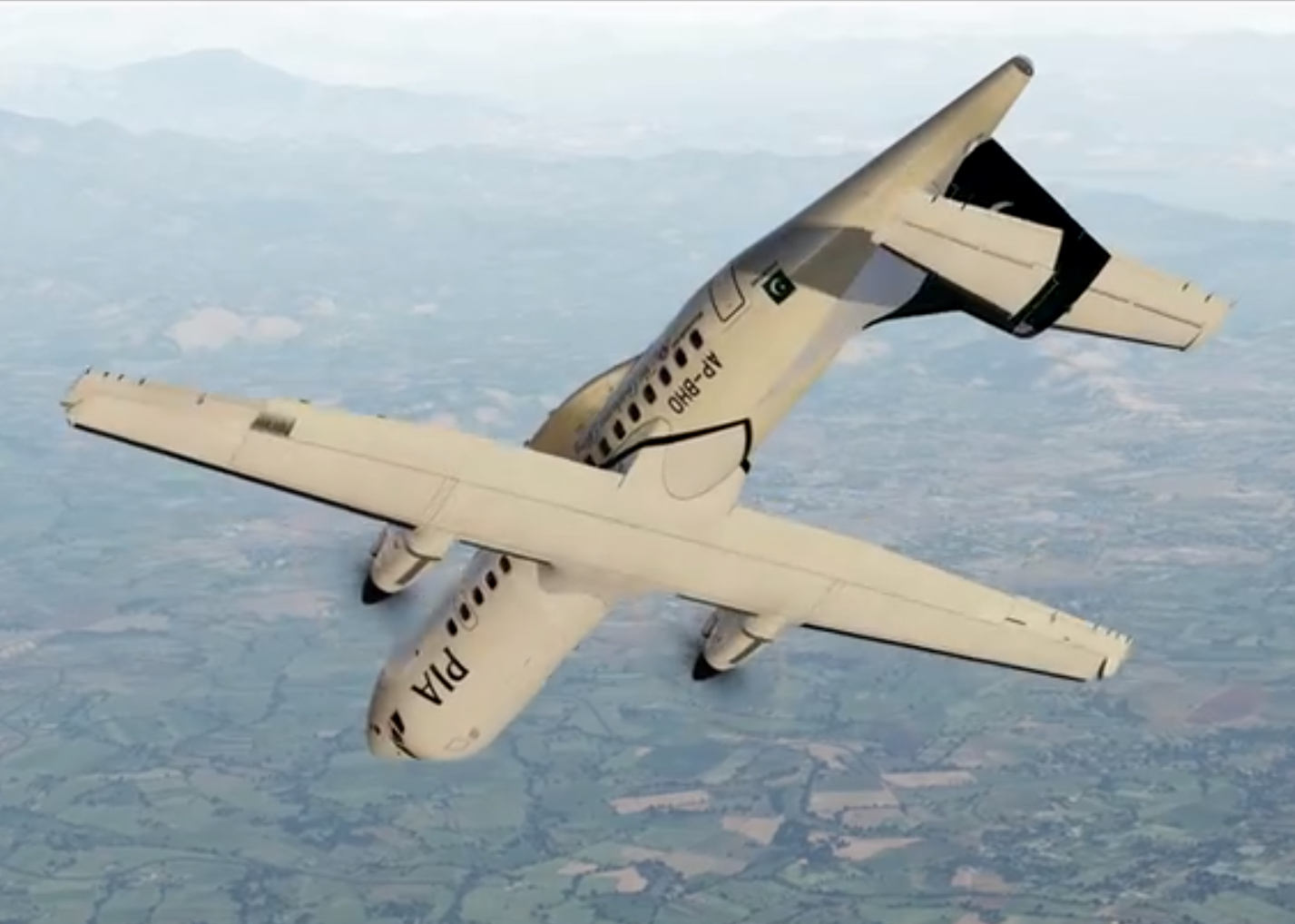
(Computer simulation of TFC: PIA Flight 661 spiraling down)
Pakistan International Airlines flight 661, an ATR 42-500, was destroyed after impacting a hillside near Havelian, Pakistan. All 47 on board were killed.
The aircraft took off from Chitral at 15:38 hours local time, bound for Islamabad. The first officer, who was undergoing route training, was Pilot Flying (PF) and the captain was Pilot Monitoring (PM). A third first officer who was already route cleared, was in the jump seat.
The aircraft levelled off at FL135 at an Indicated Air Speed (IAS) of 186 knots about 10 minutes after takeoff. The aircraft failed to attain the expected cruise speed of 230 knots.
The flight remained uneventful till 16:04:55. While the captain was engaged in a passenger announcement, the Propeller Electronic Control of the left side propeller (PEC-1) Single Channel fault appeared, followed by PEC-1 Fault.
The captain interrupted the announcement and asked for the Quick Reference Handbook (QRH) with abnormal procedures. The first officer asked to bring the power back and asked the captain to call the engineer, who was travelling as a passenger, to the cockpit.
Reduction in power resulted in a gradual drop in the IAS to 146 knots. The flight crew attempted to rectify the fault using the checklist, but all three attempts to reset the PEC failed.
The no.1 propeller blade pitch angle was not under the control of the PEC anymore. The blade pitch angle increased and there was an unusual decrease in the propeller speed. No. 1 propeller speed (Np-1) decreased from a normal in flight value of 82% to 62%.
At 16:07:26, the first officer cautioned about the decreasing airspeed and as a result both power levers were advanced. The IAS gradually started to increase to over 160 knots. The trainee first officer in the right-hand seat then changed seats with the other first officer. The engineer had by then joined the crew on the flight deck to help troubleshoot the issue. Despite discussing the problem, the pilots and engineer were uncertain of the origin of the fault and what to do about it.
At 16:10:33, at an airspeed of about 196 knots, a transient sound was heard, which was followed by a sudden abnormal noise. The no.1 engine torque dropped from 75% to 0% and the propeller speed (Np-1) increased rapidly from 61.5% to 102%. Additionally the Interstage Turbine Temperature (ITT) increased. The torque reducing to zero meant that the no.1 engine had failed. However, Np-1 increasing rapidly to 102% and an increase in ITT were unusual.
The flight crew then started actions to accomplish for an engine flame out. An immediate action for an engine flame out was to retard power of the effected engine. However, the captain had retarded both power levers.
The rotating no.1 propeller caused drag and an asymmetric condition, more than what is usually expected in single engine flight envelope. This drag was estimated to be three times more than the value that is experienced during a usual single engine flight envelope when the propeller is in feathered position.
The IAS continued to decrease to 154 knots as the pilots worked the check list. The flight crew attempted to feather the propeller, and power on engine no.2 was increased.
At 16:11:19, the captain asked the first officer to request a lower altitude (7500 ft AMSL) and issue a Mayday call. The Np-1 propeller speed stayed below 25%, a value similar to that expected for a feathered propeller, for about 40 to 45 seconds. Subsequently Np-1 started to increase again. Initially at a slow rate and then at a very fast rate: from about 50% to 120-125% in 8 seconds. The first officer requested a lower altitude, changed over to Islamabad Approach, reported at position TYPO, but failed to make the Mayday call.
All protections of the propeller control had apparently failed as the propeller blade pitch angle decreased further. The blade pitch angle reaching low values at a high rotational speed generated immense drag. The captain was alarmed by the sound made by the increase in propeller speed and changed the power setting for engine no.2 to check if that had any effect on the noise, which it didn't.
At 16:12:14 the Auto-Pilot (AP) disengaged as it was no longer able to cope with the drag to maintain the target aircraft parameters. Control inputs by the captain were not enough to maintain direction. With further reduction in IAS to about 120 knots, the control input requirement increased and the captain was unable to counter the left-hand turn of the aircraft.
The flight crew attempted to feather the propeller again, but were not successful. The state of engine no.1 and its propeller was very unusual. It was not possible for the cockpit crew to understand the nature and extent of the technical malfunctions.
Due to the substantial drag caused by the no.1 propeller and the low power setting, the aircraft was just short of a stalled condition. At 16:12:36 the stall warning sounded and the stick shaker activated briefly. Power on engine no.2 was advanced, coupled with excessive right rudder input to counter the asymmetric condition. At 16:12:44 this coincided with an abrupt drop in the propeller speed. A considerable amount of drag was suddenly eliminated from the left side of the aircraft, causing a immediate yaw to the right side, with the aircraft entering into a stalled flight condition. During this rapid descent and a roll the aircraft lost about 5100 ft altitude to 8350 ft AMSL. The aircraft first rolled right by about 360° and then further rolled by another about 90° and then subsequently rolled left to a wings level state. Control had been regained but the flight crew was emotionally shaking by this event.
Np-1 had stabilized lower than 5%, and the blade pitch angle was at low pitch. At this position the generated drag value was around 2,000 lbf, which was about seven times more than the drag a propeller can usually produce in feathered state during a single engine flight. The aircraft was unable to fly a level flight and could only fly in a gradual descent profile. Directional control was only possible with substantial right rudder and right aileron inputs.
The flight crew contacted the approach controller and requested shorter vectors with priority landing at Islamabad Airport along with a Mayday calls.
After 16:17:20 the aircraft started to turn left again with an aim to reach Islamabad Airport. While the power lever was advanced to 81.7°, and the torque was 99.8%, the IAS had gradually decreased to 156 knots. A gradually reducing control effectiveness, and an excessive drag of the left side of the aircraft, resulted in a corresponding increase in control input requirement.
At 16:18:45 the stall warning horn sounded again for 3.5 seconds. The aircraft altitude and IAS kept on decreasing to 4809 ft AMSL (2168 ft AGL) and 128 knots, and kept turning left with progressively increasing right control inputs from the cockpit crew. At 16:18:52 the Terrain Avoidance Warning System (TAWS) alarm began to sound.
At 16:20:23 the aircraft was continuously turning left, with progressively increasing right control inputs. The IAS was reducing through 120 knots and the aircraft stalled at 850 ft AGL.
It impacted the side of a mountain and disintegrated.
The investigation revealed that the sequence of events was initiated with the dislodging of one turbine blade of Power Turbine Stage (PT-1) of engine no. 1 due to fatigue. According to a Service Bulletin these turbines blades were to be changed after completion of 10,000 hours, on immediate next maintenance opportunity. The engine in question was under maintenance on November 11, 2016, and at that time these blades had completed 10004 hours and were thus due for a change. This action was not accomplished.
The aircraft flew approximately 93 hours after this maintenance activity before it crashed on December 7.
Probable Causes of Occurrence.
9. Probable Primary Factors.
(a) The dislodging / fracture of one PT-1 blade of No 1 Engine triggered a chain of events. Unusual combination of fractured / dislodged PT-1 blade with two latent factors caused off design performance of the aircraft and resulted into the accident.
(b) The dislodging / fracture of PT-1 blade of No 1 Engine occurred after omission from the EMM (Non-Compliance of SB-21878) by PIA Engineering during an unscheduled maintenance performed on the engine in November 2016, in which the PT-1 blades had fulfilled the criteria for replacement, but were not replaced.
(c) Fracture / dislodging of PT-1 blade in No 1 Engine, after accumulating a flying time slightly more than the soft life of 10,000 hrs (ie at about 10004.1 + 93 hrs) due to a known quality issue. This aspect has already been addressed by re-designing of PT-1 blades by P&WC.
Probable Contributory Factors.
(a) A fractured pin (and contamination inside the OSG), contributed to a complex combination of technical malfunctions. The pin fractured because of improper re-assembly during some unauthorized / un-documented maintenance activity. It was not possible to ascertain exact time and place when and where this improper re-assembly may have occurred.
(b) Contamination / debris found in overspeed line of PVM of No 1 Engine probably introduced when the propeller system LRU"s were not installed on the gearbox, contributed to un-feathering of the propeller. It was not possible to ascertain exact time and place when and where this contamination was introduced.
Specifications
Spotlights
- Scaiency37 1.8 years ago
General Characteristics
- Predecessor ATR-42
- Successors 1 airplane(s) +35 bonus
- Created On iOS
- Wingspan 78.8ft (24.0m)
- Length 74.2ft (22.6m)
- Height 24.8ft (7.6m)
- Empty Weight 41,053lbs (18,621kg)
- Loaded Weight 49,862lbs (22,617kg)
Performance
- Horse Power/Weight Ratio 0.11
- Wing Loading 51.8lbs/ft2 (252.8kg/m2)
- Wing Area 963.0ft2 (89.5m2)
- Drag Points 21593
Parts
- Number of Parts 1341
- Control Surfaces 4
- Performance Cost 4,969

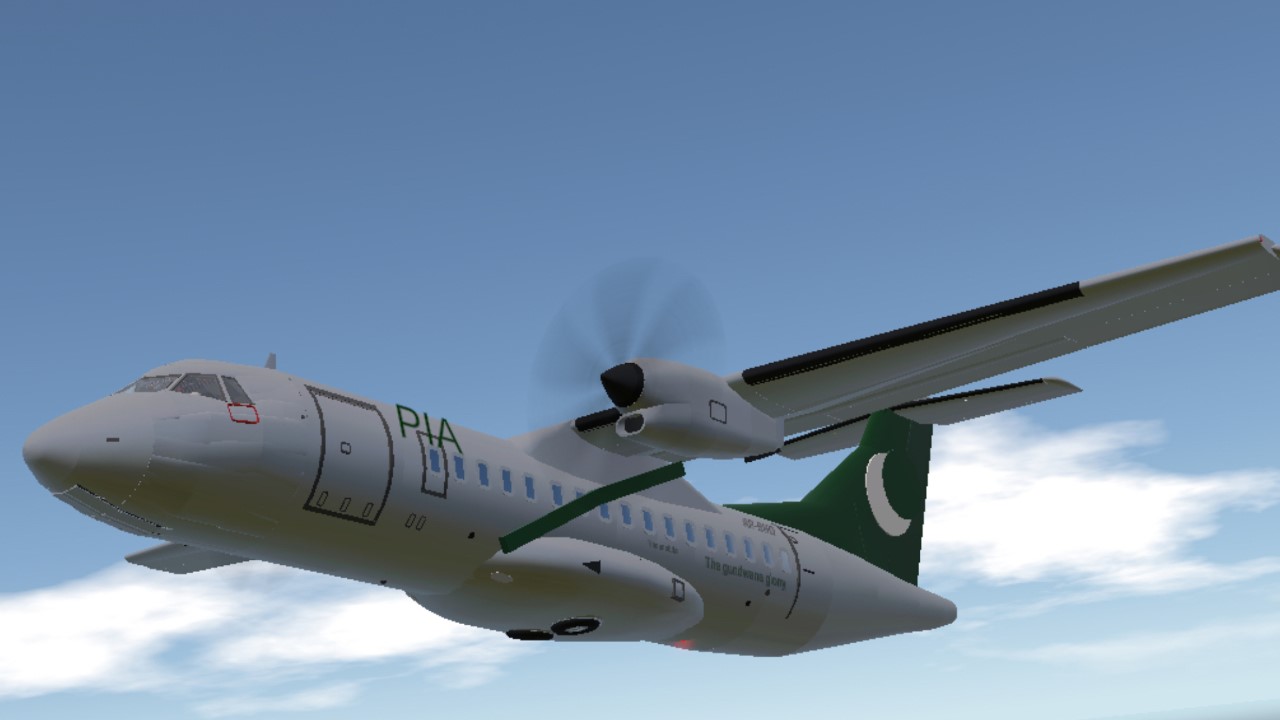
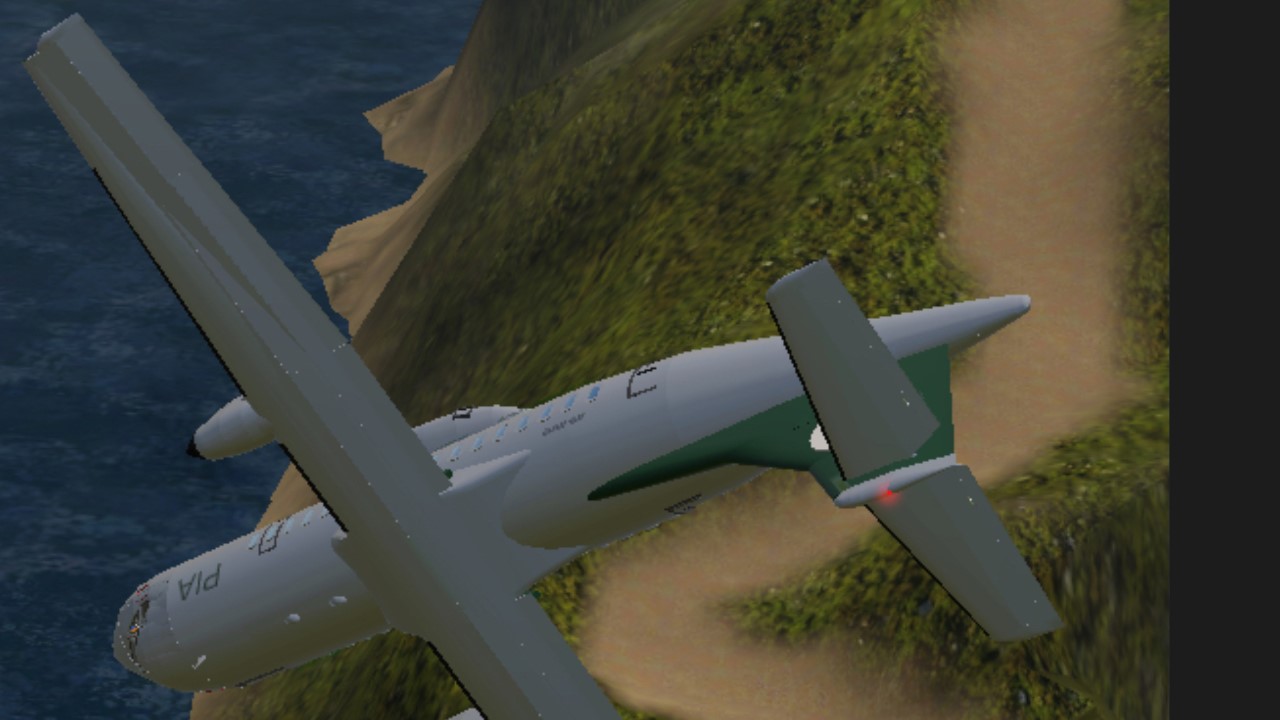

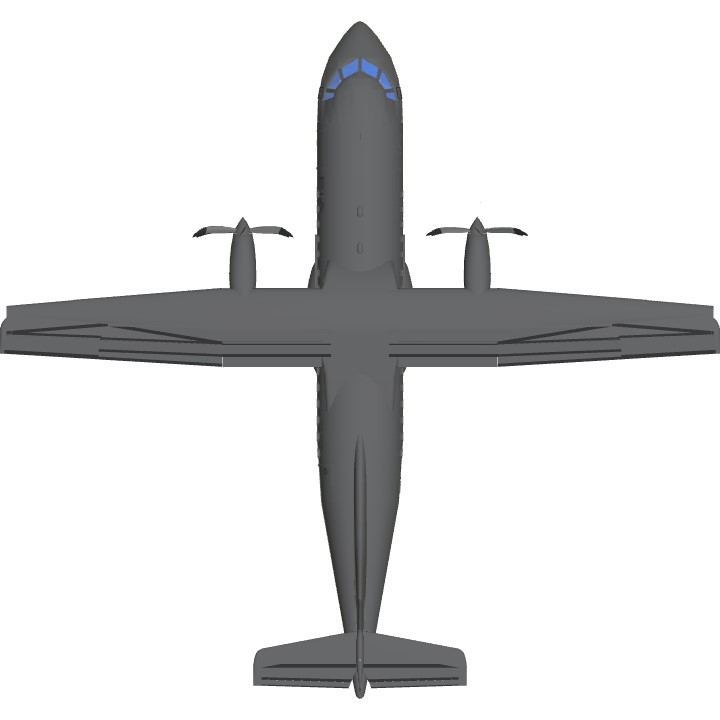
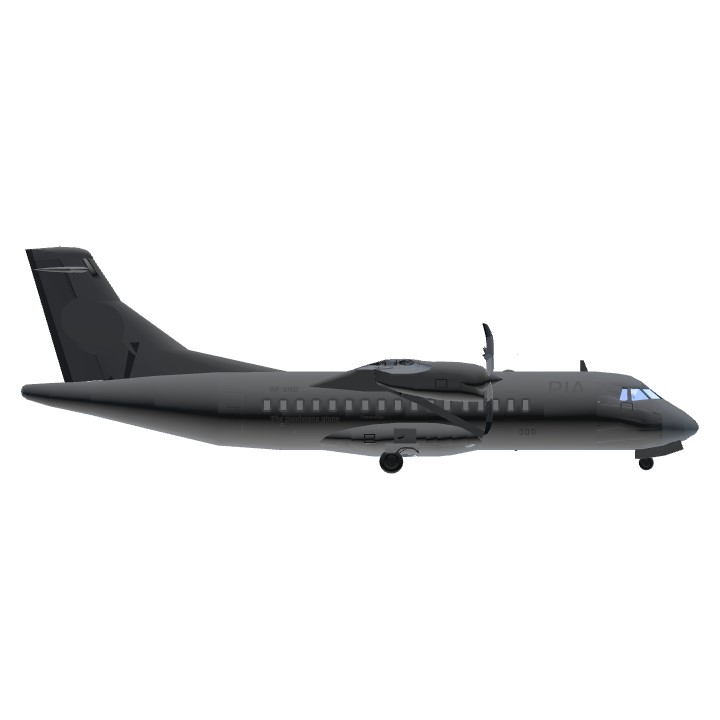
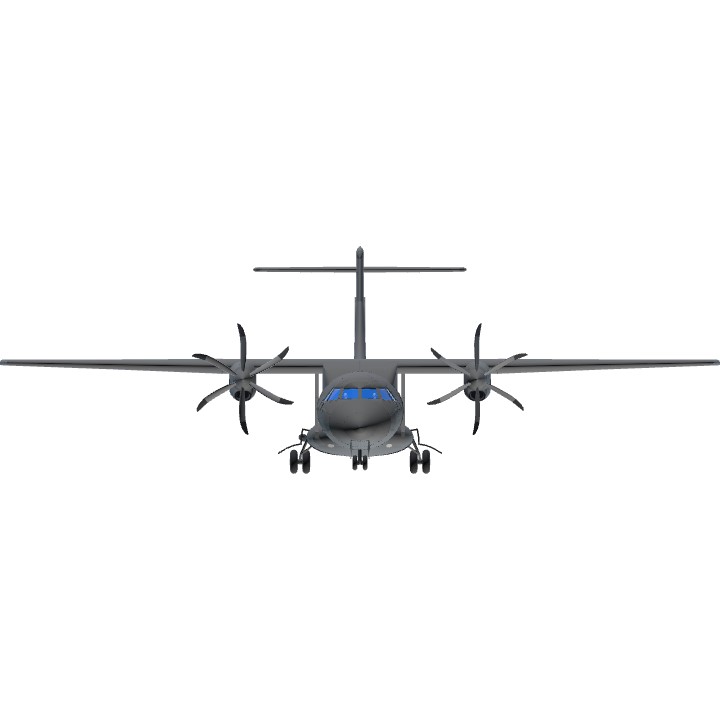
大佬,让我用用你飞机哈